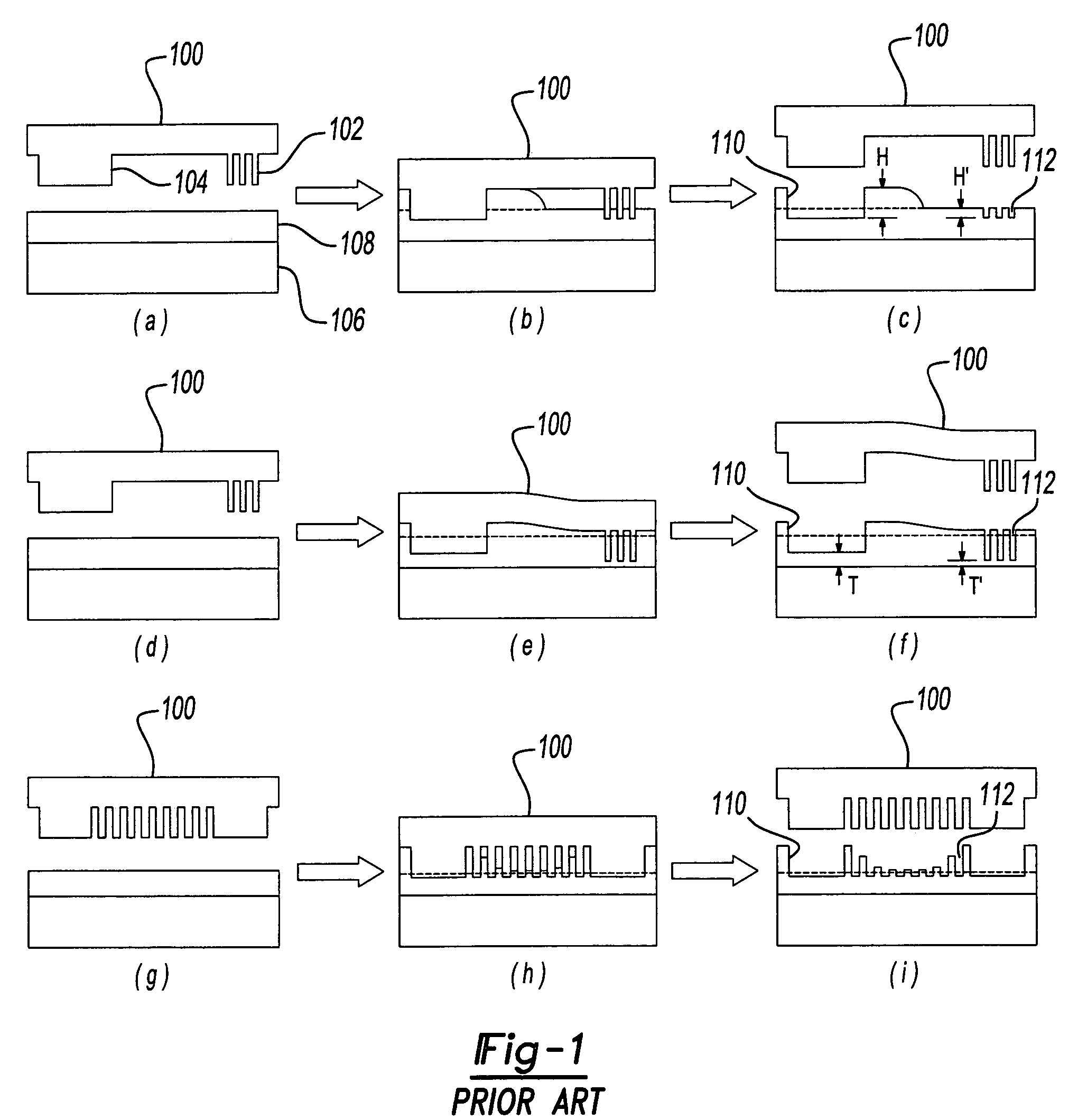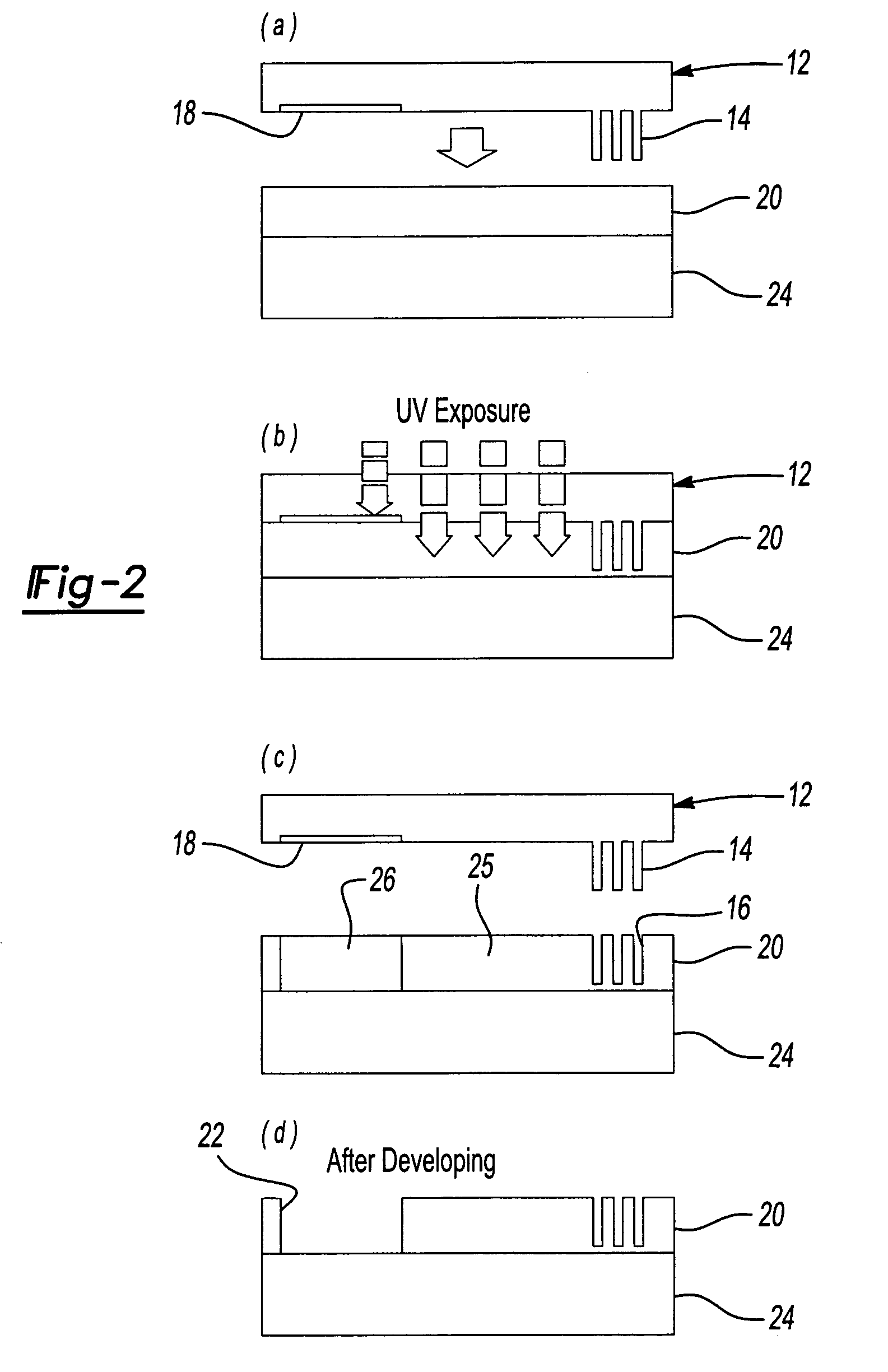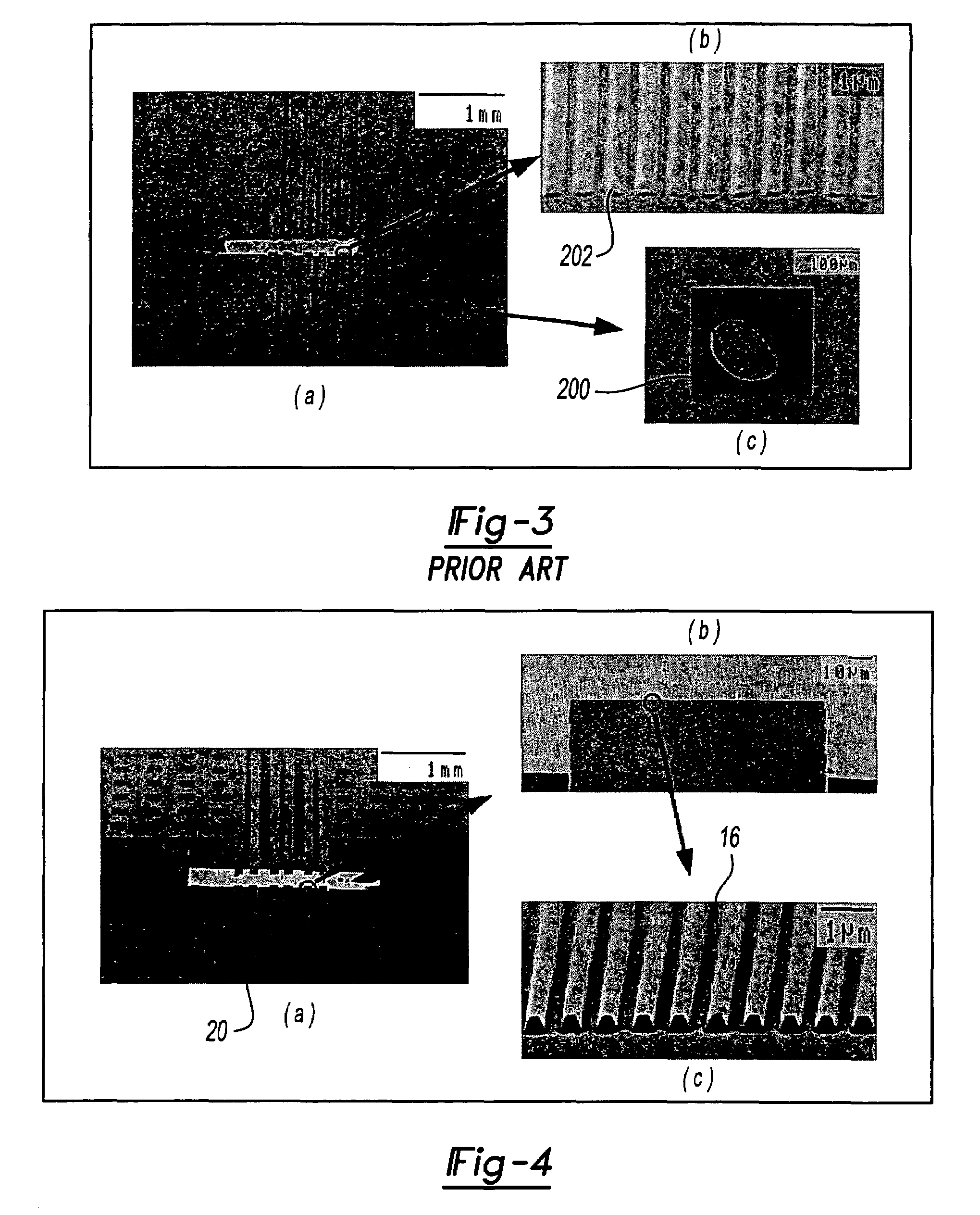Combined nanoimprinting and photolithography for micro and nano devices fabrication
a nano-scale patterning and nano-technology, applied in the field of nano-scale patterning for nano-scale structures, can solve the problems of inability to achieve the effect of high-throughput and significant practical valu
- Summary
- Abstract
- Description
- Claims
- Application Information
AI Technical Summary
Benefits of technology
Problems solved by technology
Method used
Image
Examples
first embodiment
[0040]Therefore, according to the present invention, a novel method of combined nanoimprint and photolithography is provided that integrates the benefits of nanoimprinting with the benefits of photolithography to achieve new micro and nano fabrication capability not otherwise possible using the techniques individually.
[0041]As best seen in FIGS. 2(a)-(d), the method according to the present invention is illustrated. The present invention employs a hybrid mold configuration, generally indicated at 12, which acts as both a nanoimprint lithography mold and a photolithography mask—an example of hybrid mold 12 is illustrated at FIG. 2(a). Hybrid mold 12 is preferably made of an ultraviolet (UV) transparent material, such as fused silica. Protrusions 14 are formed on hybrid mold 12 for physically imprinting nano-scale features 16 within a resist layer 20 on a substrate 24. Hybrid mold 12 further includes mask members 18, in the form of metal pads, embedded therein to serve as ultraviolet ...
second embodiment
[0048]According to the present invention, yet another new method of combined nanoimprint and photolithography is provided wherein a metal layer is placed on an end of the mold protrusion feature, which eliminates the separate residual removal step in nanoimprint lithography.
[0049]According to the present embodiment as illustrated in FIGS. 5(a)-(d), hybrid mold 12 is modified, generally designated as hybrid mold 12′, such that it includes a light-blocking metal layer 50, such as nickel, disposed at an end of nano-scale protrusions 14. Metal layer 50, similar to metal layer 18, acts as an embedded photomask and prevents ultraviolet radiation from penetrating into portions of resist layer 20 (specifically, a residual layer of resist disposed at a lowermost portion of the feature on top of substrate 24).
[0050]More particularly, hybrid mold 12′ is first imprinted into resist layer 20, such as a negative tone UV resist (see FIG. 5(a)). The entire assembly is then flood-exposed with ultrav...
PUM
| Property | Measurement | Unit |
|---|---|---|
| aspect ratio | aaaaa | aaaaa |
| size | aaaaa | aaaaa |
| height | aaaaa | aaaaa |
Abstract
Description
Claims
Application Information
 Login to View More
Login to View More - R&D
- Intellectual Property
- Life Sciences
- Materials
- Tech Scout
- Unparalleled Data Quality
- Higher Quality Content
- 60% Fewer Hallucinations
Browse by: Latest US Patents, China's latest patents, Technical Efficacy Thesaurus, Application Domain, Technology Topic, Popular Technical Reports.
© 2025 PatSnap. All rights reserved.Legal|Privacy policy|Modern Slavery Act Transparency Statement|Sitemap|About US| Contact US: help@patsnap.com



